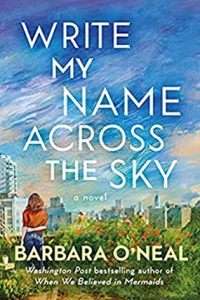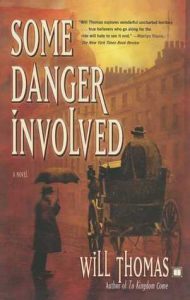 Memories of the Lost by Barbara O'Neal
Memories of the Lost by Barbara O'Neal Format: eARC
Source: supplied by publisher via NetGalley
Formats available: hardcover, paperback, ebook, audiobook
Genres: magical realism, relationship fiction, women's fiction
Pages: 285
Published by Lake Union Publishing on July 30, 2024
Purchasing Info: Author's Website, Publisher's Website, Amazon, Barnes & Noble, Bookshop.org, Better World Books
Goodreads
An unsuspecting artist uncovers her late mother’s secrets and unravels her own hidden past in a beguiling novel by the USA Today bestselling author of When We Believed in Mermaids.
Months after her mother passes away, artist Tillie Morrisey sees a painting in a gallery that leaves her inexplicably lightheaded and unsteady. When a handsome stranger comes to her aid, their connection is so immediate it seems fated, though Liam is only visiting for a few days.
Working on her own art has always been a refuge, but after discovering a document among her mother’s belongings that suggests Tillie’s life has been a lie, she begins to suffer from a series of fugue states, with memories surfacing that she isn’t even sure are her own. As her confusion and grief mount, and prompted by a lead on the painting that started it all, Tillie heads to a seaside village in England. There, she hopes to discover the source of her uncanny inspirations, sort out her feelings about Liam, and unravel truths that her mother kept hidden for decades.
The fluidity of memory, empowering strength of character, beauty of nature, and love of family braid together in this artful tapestry of a novel.
My Review:
Who is Tillie Morrisey?
That question is at the heart of this story, as Tillie discovers that the only true things that she can be sure of are the ones that she has accomplished for herself. She is a successful artist, living in New York City, preparing for her next show.
Those things are real and true, no matter what else happens – or has already.
Because discovering that the rest of the things she believed were true – about her mother, their lack of family, the isolation of Tillie’s childhood, even Tille’s name and family history, are hidden behind a tissue of lies that Tillie had no idea lurked inside her memories.
Which she can’t trust at all.
Inside Tillie’s fractured mental landscape is something a lot like ‘Pandora’s Box’ – with all the implications that name invokes about what is released and what lurks within. The key to Tillie’s version of that box turns out to be an old newspaper clipping hidden away in her recently deceased mother’s house. The clipping holds the story of a long ago tragedy. That her mother didn’t reveal all the details of something that happened before Tillie was born isn’t really a surprise – but the other document that she finds certainly is.
Because Tillie’s birth certificate is right there in the same set of boxes. But it’s not exactly Tillie’s, because that Tillie – that other Tillie – would have been three years older than artist Tillie. And the other Tillie died in that long ago tragedy.
Present-day Tillie, adult Tillie, doesn’t know if the girl that died was her sister, if her mother named the both the same for ‘reasons’ or if there is more to unravel than Tillie ever knew.
That this revelation comes at a point in Tillie’s life where she herself is unraveling, as she realizes that she’s painting wild cats while is in so deep a fugue state that she loses time and doesn’t remember the work – and a point when she’s fallen deeply into a long-distance relationship – may be enough to finally release the memories she’s blocked – and lost.
Or she may just lose herself.
 Escape Rating B+: I picked this up because I’ve enjoyed several of the author’s previous works, particularly Write My Name Across the Sky and This Place of Wonder. I was hoping for more of the same and almost, but not quite, got it.
Escape Rating B+: I picked this up because I’ve enjoyed several of the author’s previous works, particularly Write My Name Across the Sky and This Place of Wonder. I was hoping for more of the same and almost, but not quite, got it.
It seems like all of the author’s work circles around a group of people whose past suddenly crashes headlong into the present – and how they deal with that crash.
In this particular case, it’s Tillie’s past, the past her mother withheld from her – a withholding that started early enough (Tillie was FOUR) and was pervasive enough that Tillie repressed any memories that she might have had.
What’s happening in this story is that those repressed memories are now breaking through and manifesting as migraines (YUCK and UGH), painting in fugue and generally knocking on the door in Tillie’s memory any way they can.
That this all started happening just a few months after her mother Arletta’s death can’t possibly be a coincidence – and it isn’t.
Although Tillie’s brand new romance possibly is one. Or it may be karma or fate trying to put things back on course in ways that initially seem like tangents or distractions but finally do reach the heart of the matter.
From whence comes to the reasons that I liked this book but didn’t love it quite as much as I hoped I would.
Because this story operates on three tracks. Of course, there’s Tillie’s perspective, and then there’s her new love, Liam’s point of view. I liked them, I liked their story, I understood their doubts and fears even as they kept moving forwards into a future they couldn’t quite see yet.
But there was a third track to the story that felt like an interruption to the thing as a whole. It does eventually connect up – and that connection is SO important and part of the resolution of Tillie’s quest. Howsomever, as it was happening, as the focus switched from Tillie and Liam to this other thread it dropped me out of the story to the point where I was wondering if there was going to be a portal fantasy element along with the touch of magical realism throughout the story. (There’s no portal, but I seriously wondered for quite a while.)
So, if that third angle drives you a bit up the wall, stick with it, because the story as a whole turned out to be lovely, even as it walks Tillie – and Liam – through some surprisingly dark places along the way to their well-deserved happy ever after.

TLC tour schedule:
Instagram features:
Monday, July 29th: @groundedinreads
Monday, July 29th: @poisedpen
Monday, July 29th: @nissa_the.bookworm
Tuesday, July 30th: @cmtloveswineandbooks
Tuesday, July 30th: @crystalclearchapters
Tuesday, July 30th: @addictedtobooks86
Wednesday, July 31st: @purrfectpages
Thursday, August 1st: @beastreader
Thursday, August 1st: @marensreads
Friday, August 2nd: @spaceonthebookcase
Saturday, August 3rd: @mommaleighellensbooknook
Sunday, August 4th: @book_boss-12
Monday, August 5th: @just_another_mother_
Monday, August 5th: @americanlitteacher
Tuesday, August 6th: @beachesandreads
Wednesday, August 7th: @subakka.bookstuff
Wednesday, August 7th: @nobookmark_noproblem
Friday, August 9th: @lovemybooks2020
Friday, August 9th: @allthebooksalltheways
Saturday, August 10th: @bookish.heidi
Sunday, August 11th: @
Monday, August 12th: @coffee.break.book.
Monday, August 12th: @the_unwined
Tuesday, August 13th: @bookstasamm
Wednesday, August 14th: @rozierreadsandwine
Wednesday, August 14th: @ink_drinker64
Wednesday, August 14th: @girlsinbooks
Thursday, August 15th: @readthisandsteep
Thursday, August 15th: @chapterswithcollins
Friday, August 16th: @temmathomas
Friday, August 16th: @thebookcoverlover
Sunday, August 18th: @booksandcoffeemx
Reviews:
Thursday, August 1st: @dianas_books_cars_coffee
Monday, August 5th: SusanLovesBooks
Monday, August 5th: @diveintoagoodbook
Tuesday, August 6th: What is That Book About – excerpt
Wednesday, August 7th: The Bookish Dilettante
Thursday, August 8th: Girl Who Reads
Friday, August 9th: @whatkarinareads
Monday, August 12th: Helen’s Book Blog
Tuesday, August 13th: @niks.bookshelf
Wednesday, August 14th: @kristis_literary_corner
Wednesday, August 14th: @sarahs.bookish.reviews
Thursday, August 15th: Read This and Steep – excerpt
Friday, August 16th: @books_old_and_new
Monday, August 19th: @jacklynsbooknook
Tuesday, August 20th: Eliot’s Eats
Wednesday, August 21st: Reading Reality and @reading_reality
Thursday, August 22nd: A Bookish Way of Life
Friday, August 23rd: @oilycaffeinatedmama
Monday, August 26th: @beckys_bookshelves and

 The Naturalist's Daughter by
The Naturalist's Daughter by 
 Escape Rating A-: Before I get to the story, I have to say that to this reader, at least, the original Australian cover (pictured at left) does a much better job of conveying the heart of this story – which lies in the land that gave birth to the platypus – than the US cover. Beauty may be in the eye of the beholder, etc., etc., etc., but the well-dressed somewhat generic figure on the US cover doesn’t ring true for either Rose or Tamsin – but the land and its creatures are definitely the heart of the thing.
Escape Rating A-: Before I get to the story, I have to say that to this reader, at least, the original Australian cover (pictured at left) does a much better job of conveying the heart of this story – which lies in the land that gave birth to the platypus – than the US cover. Beauty may be in the eye of the beholder, etc., etc., etc., but the well-dressed somewhat generic figure on the US cover doesn’t ring true for either Rose or Tamsin – but the land and its creatures are definitely the heart of the thing.
 The Hermit Next Door by
The Hermit Next Door by  Escape Rating B: I finished this book with a lot more mixed feelings than I expected. I thought I would just love it (spoiler: I did love
Escape Rating B: I finished this book with a lot more mixed feelings than I expected. I thought I would just love it (spoiler: I did love 

 Current Giveaways:
Current Giveaways: Blog Recap:
Blog Recap: Coming This Week:
Coming This Week:





















 Anatomy of Evil (Barker & Llewelyn, #7) by
Anatomy of Evil (Barker & Llewelyn, #7) by  Private Inquiry Agents Cyrus Barker and Thomas Llewelyn have been on a collision course with this particular date with destiny since the very first book in this series,
Private Inquiry Agents Cyrus Barker and Thomas Llewelyn have been on a collision course with this particular date with destiny since the very first book in this series,  In the end, Barker gets his man – with Llewelyn’s able assistance – just as he always does. That the solution seems plausible even though justice can’t truly be served feels right, true to the circumstances, and even surprisingly satisfactory – in spite of the lack of historical closure.
In the end, Barker gets his man – with Llewelyn’s able assistance – just as he always does. That the solution seems plausible even though justice can’t truly be served feels right, true to the circumstances, and even surprisingly satisfactory – in spite of the lack of historical closure. New Adventures in Space Opera by
New Adventures in Space Opera by  She Who Knows by
She Who Knows by  Escape Rating B+: She Who Knows is the first book in a prequel trilogy of novellas to the author’s award-winning novel
Escape Rating B+: She Who Knows is the first book in a prequel trilogy of novellas to the author’s award-winning novel  Time's Agent by
Time's Agent by